I just tested Emma's Flip mattress topper – if you're hosting overnight guests this Christmas, it's a sure-fire way to impress
It has a firm and a soft side to create the perfect sleep surface
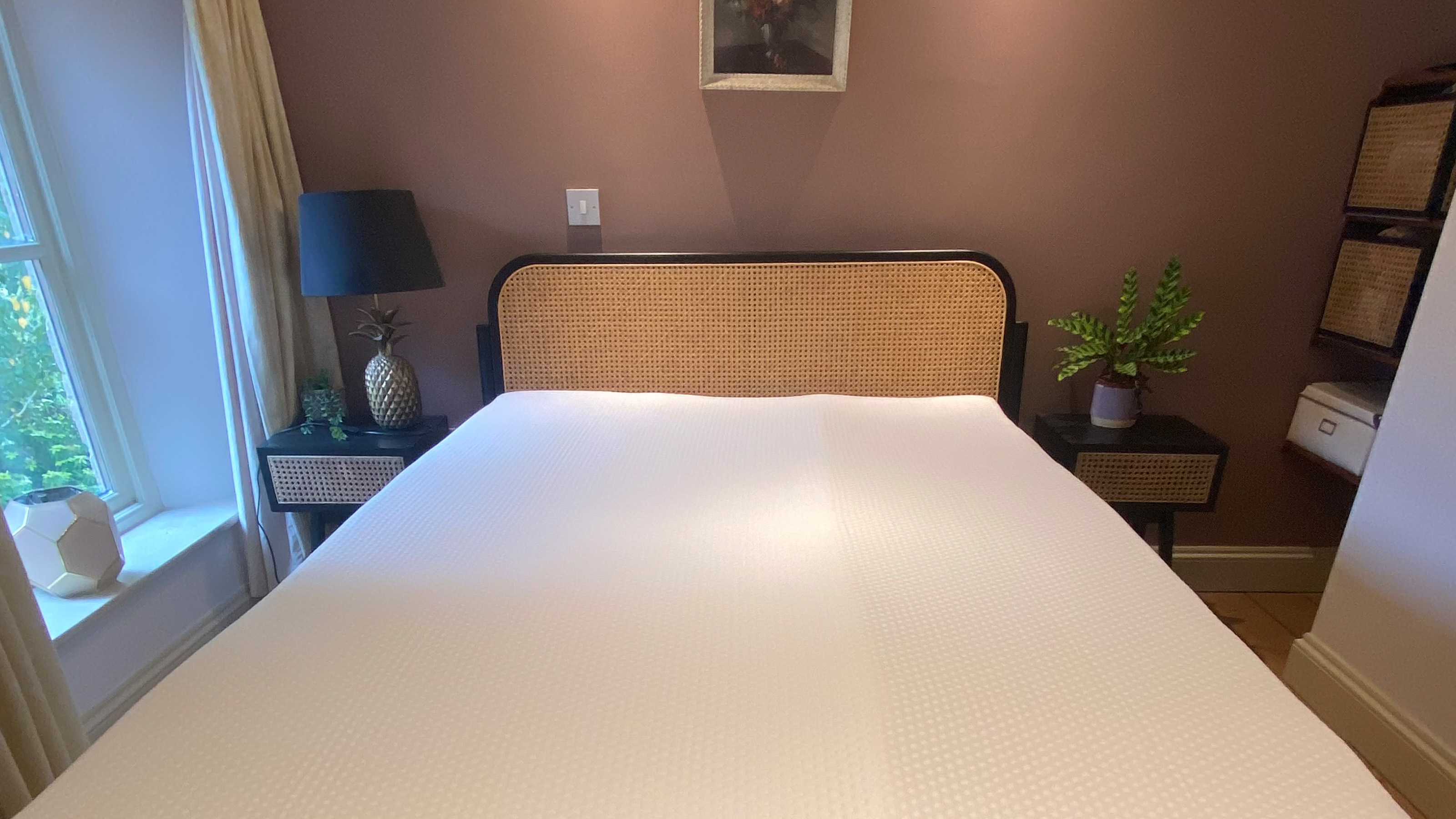
The Emma Flip Mattress Topper features a firm and a soft side that could make it the ideal solution for adding extra comfort to a guest bedroom
-
+
Offers both a firm and a soft side
-
+
Good cushioning
-
+
Good motion isolation
-
+
Good temperature regulation
-
+
100-night sleep trial
-
-
Expensive
-
-
No straps to secure it to the mattress
-
-
Off-gassing smell on unboxing
Why you can trust Ideal Home

My Emma Flip Mattress Topper review puts the brands 2-in-1 sleep surface to the test to see how it fares compared to the best mattress toppers on the market.
In a nutshell
The Emma Flip Mattress Topper is a 6cm deep foam topper that features firm high-resilience foam on one side and a softer foam on the reverse. This means that the topper can be flipped to cater to different comfort preferences.
It's a USP I haven't come across in another mattress topper, and if you're buying a topper for use on a guest bed or a sofa bed, your guests will no doubt be very happy to have a choice in their bed's comfort level. It may also suit you if you have an injury that's causing your bed to feel too firm, but you know you may not want a soft sleep surface forever.
During testing, I found the topper did a good job of cushioning my joints, adding comfort to our bed, and even providing some extra motion isolation that meant my sleep was less disturbed by my husband changing position next to me. I also found that the topper offered decent temperature regulation, although it can't compare to the natural materials in the Woolroom Deluxe Wool Mattress Topper if you're looking for a breathable sleep.
However, this topper isn't cheap. It's just under £200 for a double, and unless you know you'll be taking advantage of its 'flippability', then I've tested cheaper toppers that offer a similar level of comfort. Namely, the high-resilience foam IKEA NISSEHOLM mattress topper, which is £85 for a double and ideal if you prefer a firm feel, and the £139.95 memory foam Panda Mattress Topper, which I think is the better buy if you're looking for extra cushioning.
The one bonus the Emma Flip Mattress Topper offers that these two more affordable options don't – beyond its flippable design – is its 100-night sleep trial. So if you're not entirely sure whether a firm or soft topper will suit you better, this topper could be well worth the investment to find out.
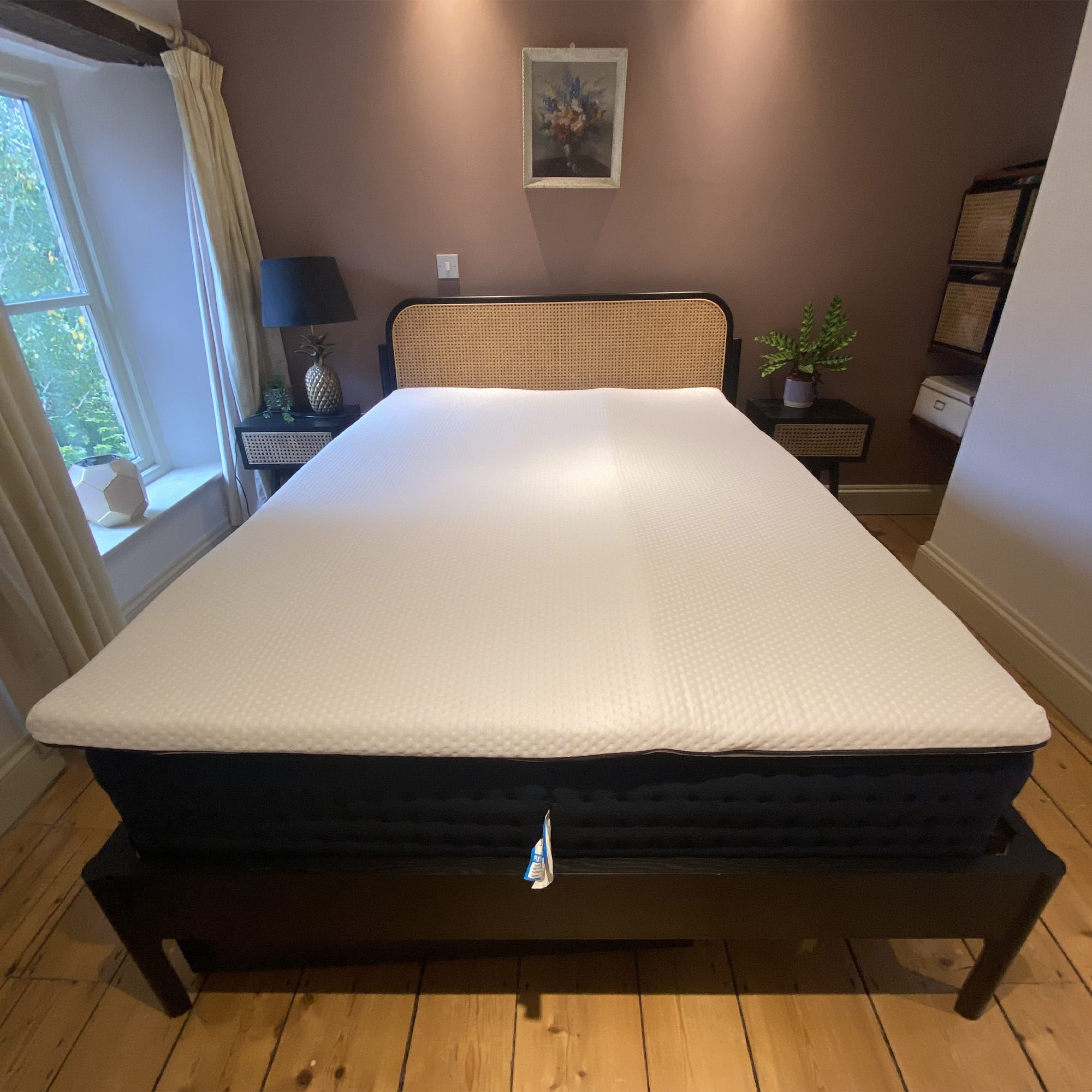
Emma Flip Mattress Topper review
Specifications
- RRP: £146 / £169 / £192 / £208 / £231
- Sizes: single / small double / double / king / super-king
- Depth: 6cm
- Construction: 98% polyester and 2% elastane cover, Airgocell foam and HRX foam filling
- Care instructions: cover machine washable at 40°C, do not tumble dry
- Manufacturer sleep trial: 100 night
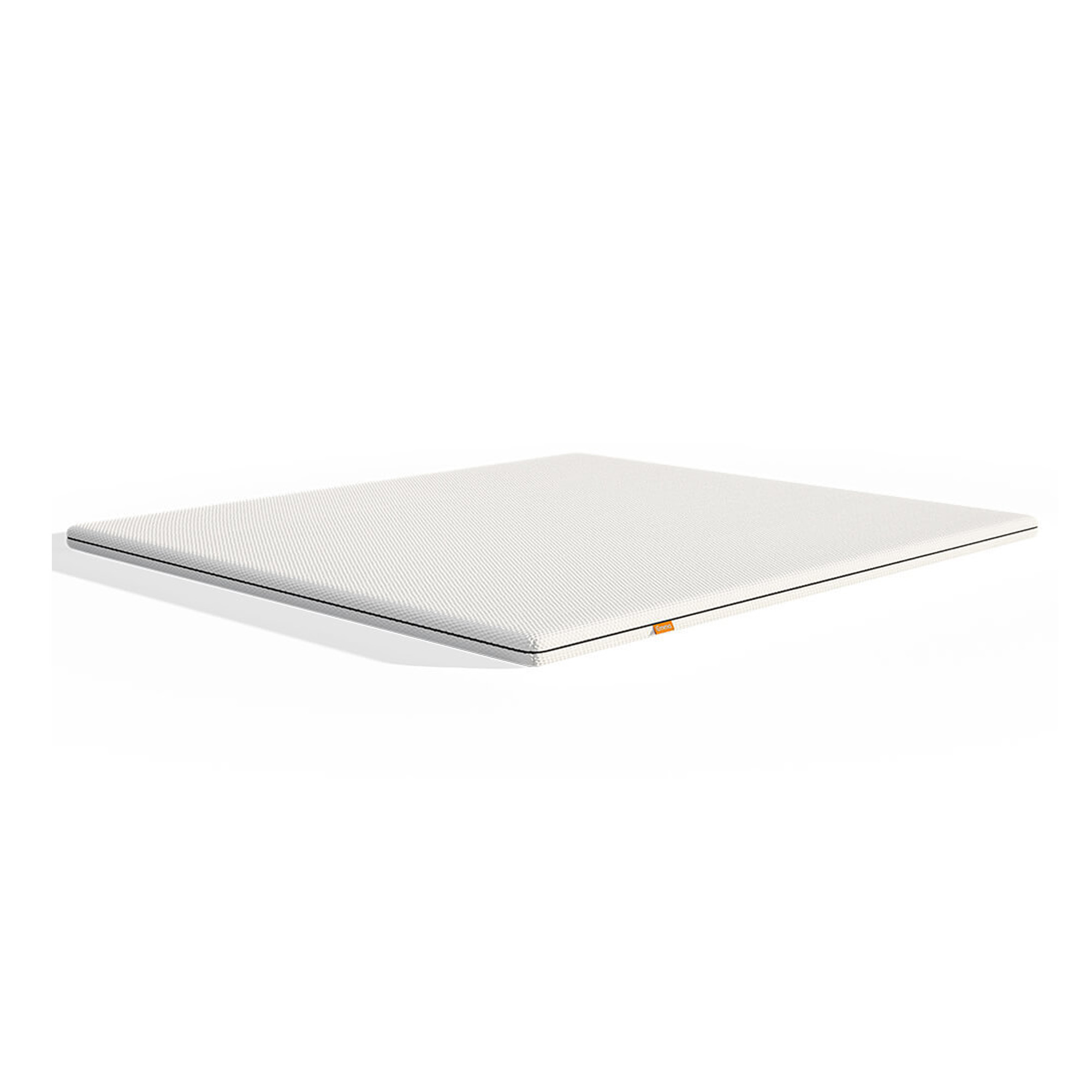

Attaching the topper to the bed
The Emma Flip Mattress Topper arrives vacuum-packed into a box, which means you need to give it a little time to 'inflate' to its full 6cm height before you sleep on it. Emma suggests allowing five hours for full inflation, but I found the topper reached its full height within a couple of hours.
Sign up to our newsletter for style inspiration, real homes, project and garden advice and shopping know-how
Unlike some mattress toppers I’ve tested, such as the Silentnight Deep Sleep Ultimate 1000 Mattress Topper and Dunelm’s Gel Fusion Mattress Topper, the Emma Flip doesn't have any elasticated straps at the corners to hold it in place on the mattress.
I guess this is understandable, considering the topper is designed to be flipped, and in some ways, this was better because there was no need to lift the corners of the mattress to slide the straps under. However, the downside was that it meant that when I was fitting the sheet on top of the topper, it moved slightly.
Once the sheet was firmly in place, it kept the topper secured, but every time I changed the bed, I found I needed to make sure it was properly in place before trying to put the fitted sheet on top, which was a little bit of a struggle.
I found the topper also had an off-gassing smell when I first unpacked it. My children noticed immediately and commented on it, with my youngest saying it smelt like marker pens! This is common with toppers made from memory foam or polyurethane foam, and it faded in less than 24 hours, but I'd recommend popping it in a spare room to air off before sleeping on it.

Comfort
The main USP of the Emma Flip Mattress Topper is that, as its name might suggest, it can be flipped to offer two different comfort levels. One side of the foam insert is made from HRX or high-resilience foam, which offers a firmer feel, and the other side features a softer feel.
Measuring 6cm deep, this foam topper isn't as thick as some, but it felt substantial enough to make a real difference to the comfort of my mattress during testing.
On the soft side, I felt like I sank a bit too much into the topper surface, which made it harder to turn over and move around in the night. However, the motion isolation on this side was brilliant, meaning I hardly felt my husband rolling over in the night.
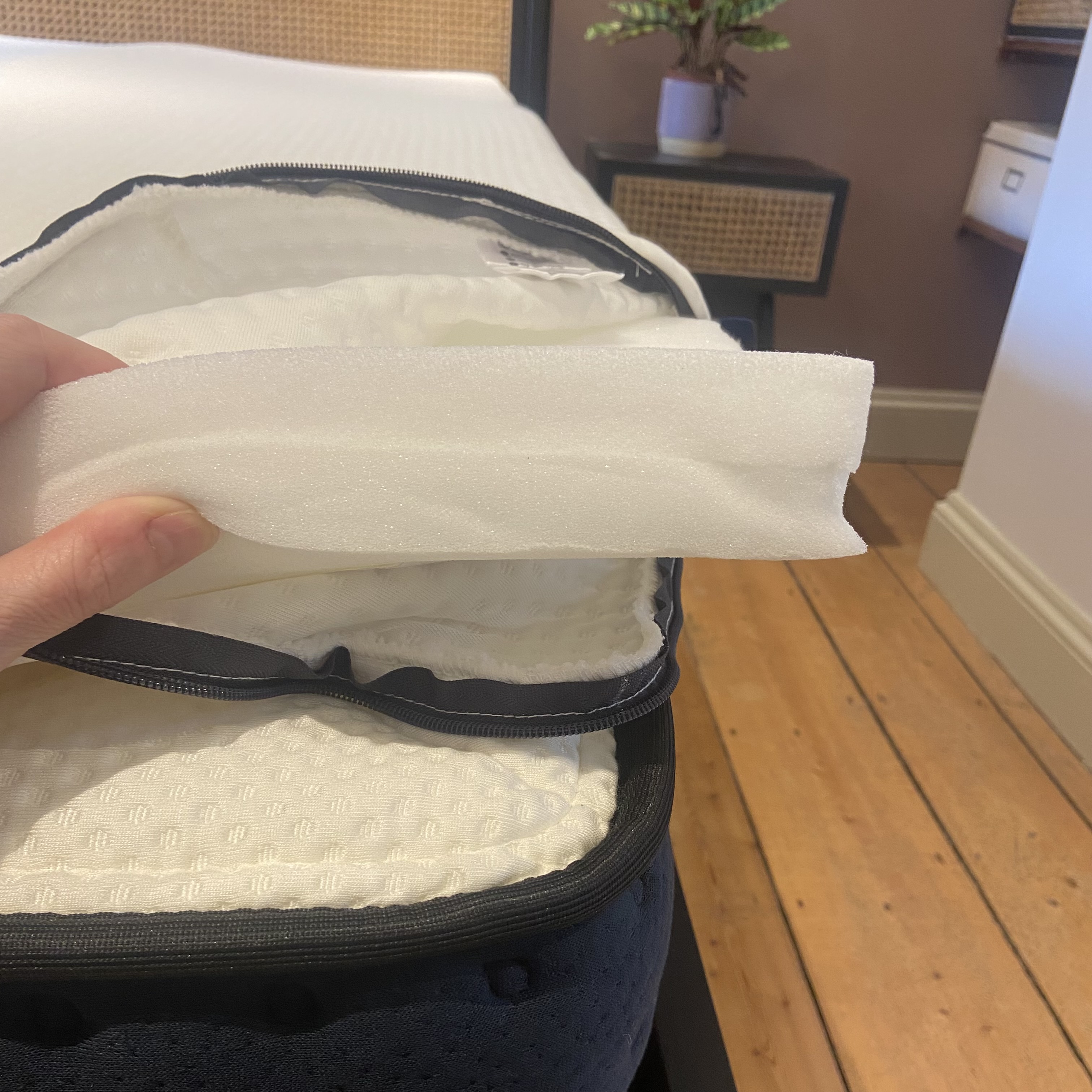
In contrast, the firmer side was perfect for my preference, and as someone who sleeps predominantly on their back or side, it suited my sleeping position well. My hips didn't dip too far into the topper when I lay on my back, and when I lay on my side, it cushioned my hip and shoulder nicely.
In fact, I really noticed the difference that this topper made to my aching hip and shoulder, which often wakes me up in the night. When I slept on the Emma Flip Mattress Topper, the cushioning of my joints was so good that I didn’t wake up in the night with any aches or pains.
On the firmer side, I could feel the movement of another person in the bed a bit more, but it still had good motion isolation, meaning that when I shared the bed with my very wriggly son one night, I wasn’t disturbed in the night by him like I usually am!
Temperature regulation
The Emma Flip topper is made from foam that features 'Point Elastic Airgocell® technology'. According to Emma, this tech 'enhances breathability and promotes airflow by absorbing and then evaporating sweat so that rising temperatures won’t disturb your sleep.'
When I slept on this mattress topper, I didn’t wake up in the night feeling sweaty like I often do, and in the morning, I didn’t feel too hot either. My youngest son, Seb, 9, often wakes up very sweaty and clammy, but when he slept on this topper, I noticed he felt much less sweaty in the morning, and he noticed an improvement too.
On that basis, I think the temperature regulation of the Emma Flip Mattress Topper is decent. However, I didn't find it as breathable as a topper filled with natural materials, such as the Woolroom Deluxe Wool Mattress Topper.
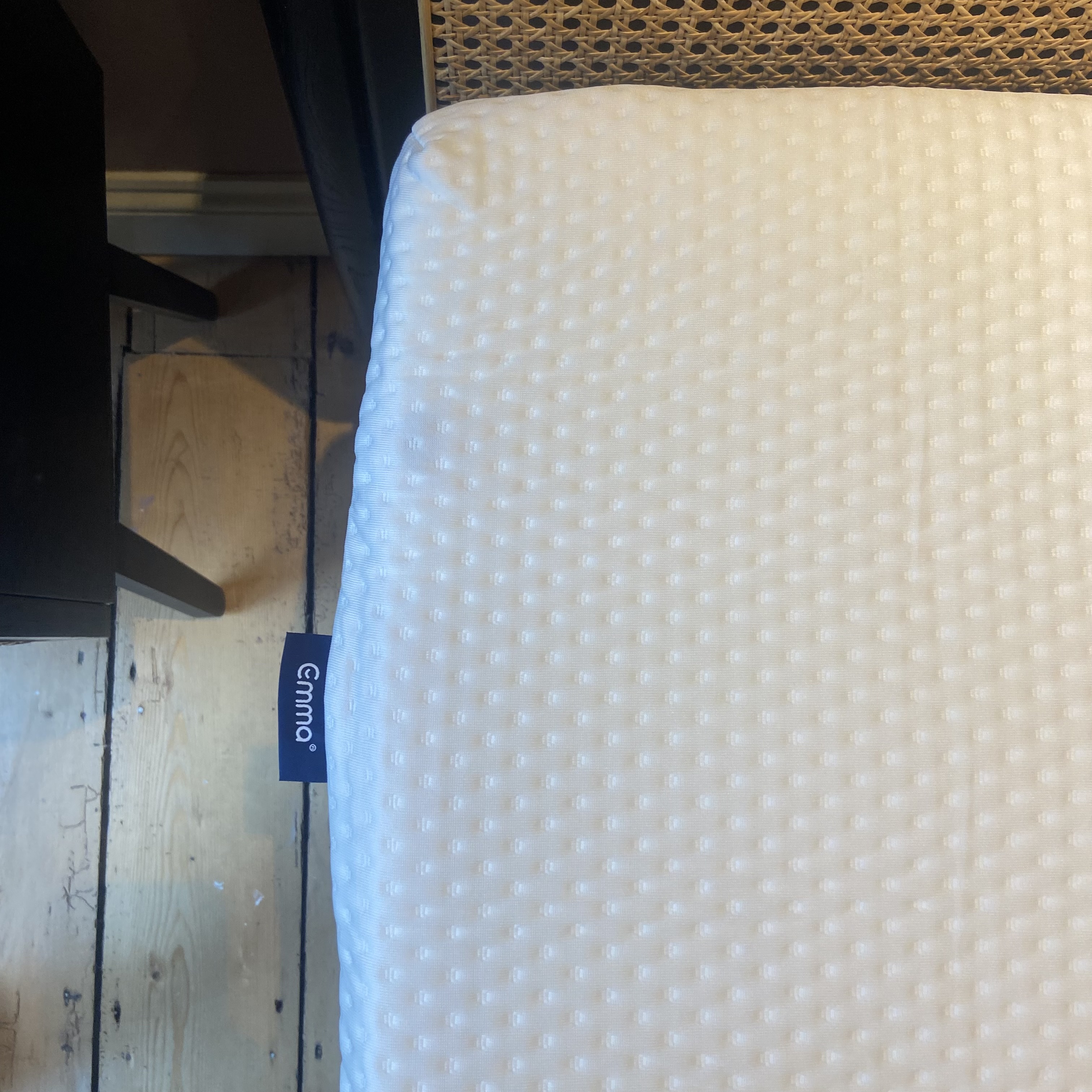
Care instructions
Whilst you can't wash the main foam filling of this topper, it does have a removable cover which can be machine-washed at 40°C. Although you can't tumble dry it, so it will need to be line-dried.
I found the cover was easy to remove, and it retained its shape well after washing, meaning it was also easy to put back on. However, removing the cover for washing was more fiddly and time-consuming than washing the Silentnight Deep Sleep Mattress Topper, which can be popped into the washing machine in its entirety.
Still, being able to machine wash the cover of the Emma Flip is a definite selling point for me, having children who are often spilling things, and also as a fake-tan user who finds the tan often seeps through the sheets.
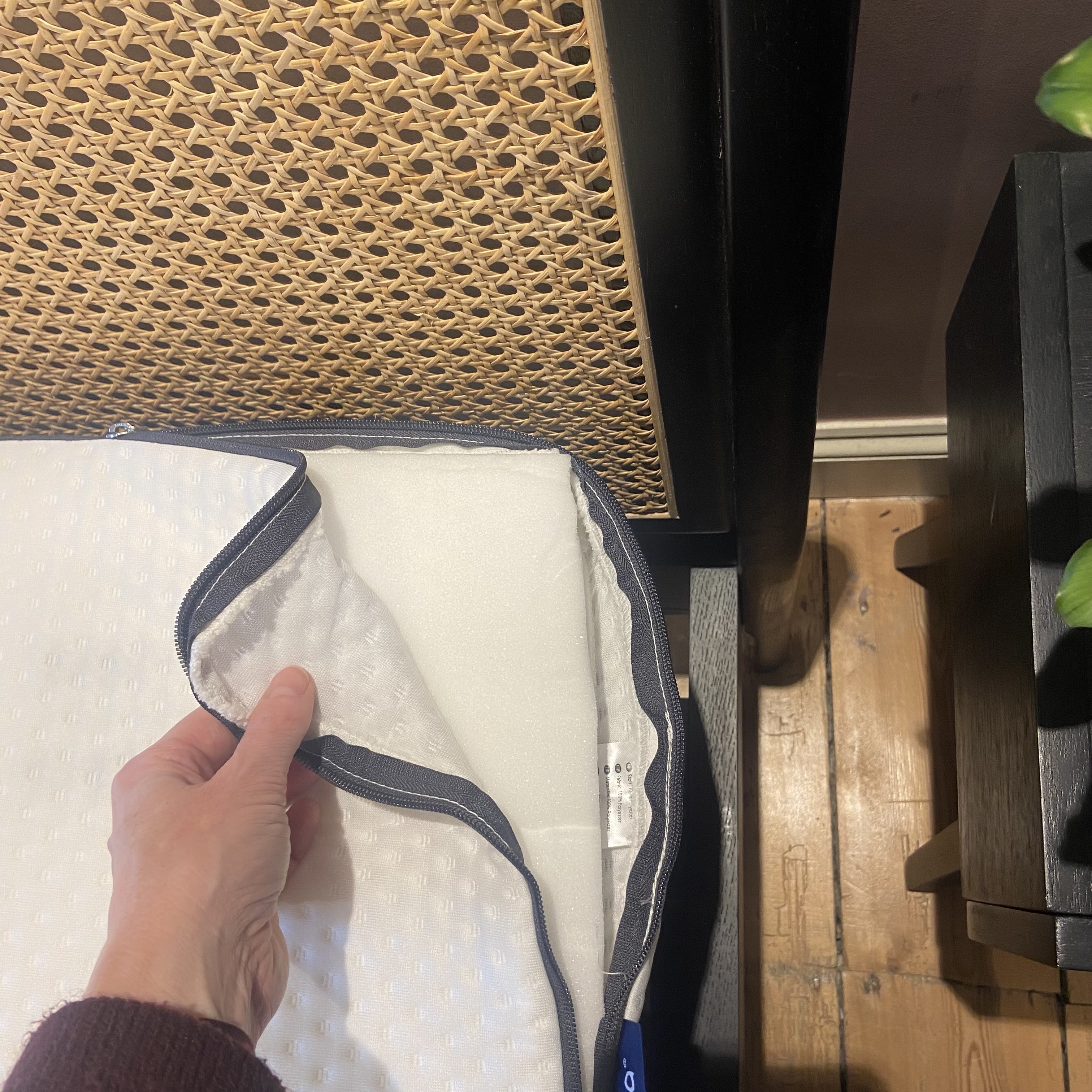
Sleep trial
Emma offers a generous 100-night sleep trial on the Flip mattress topper. This means you can test it out in the comfort of your home and return it if you don’t feel like it increases your sleep comfort.
Experts advise giving a new mattress 30 days to allow your body to adjust to a new sleep surface, and I assume that applies to toppers too, so 100 nights should be plenty of time to see whether that firm or soft side improves your sleep setup.
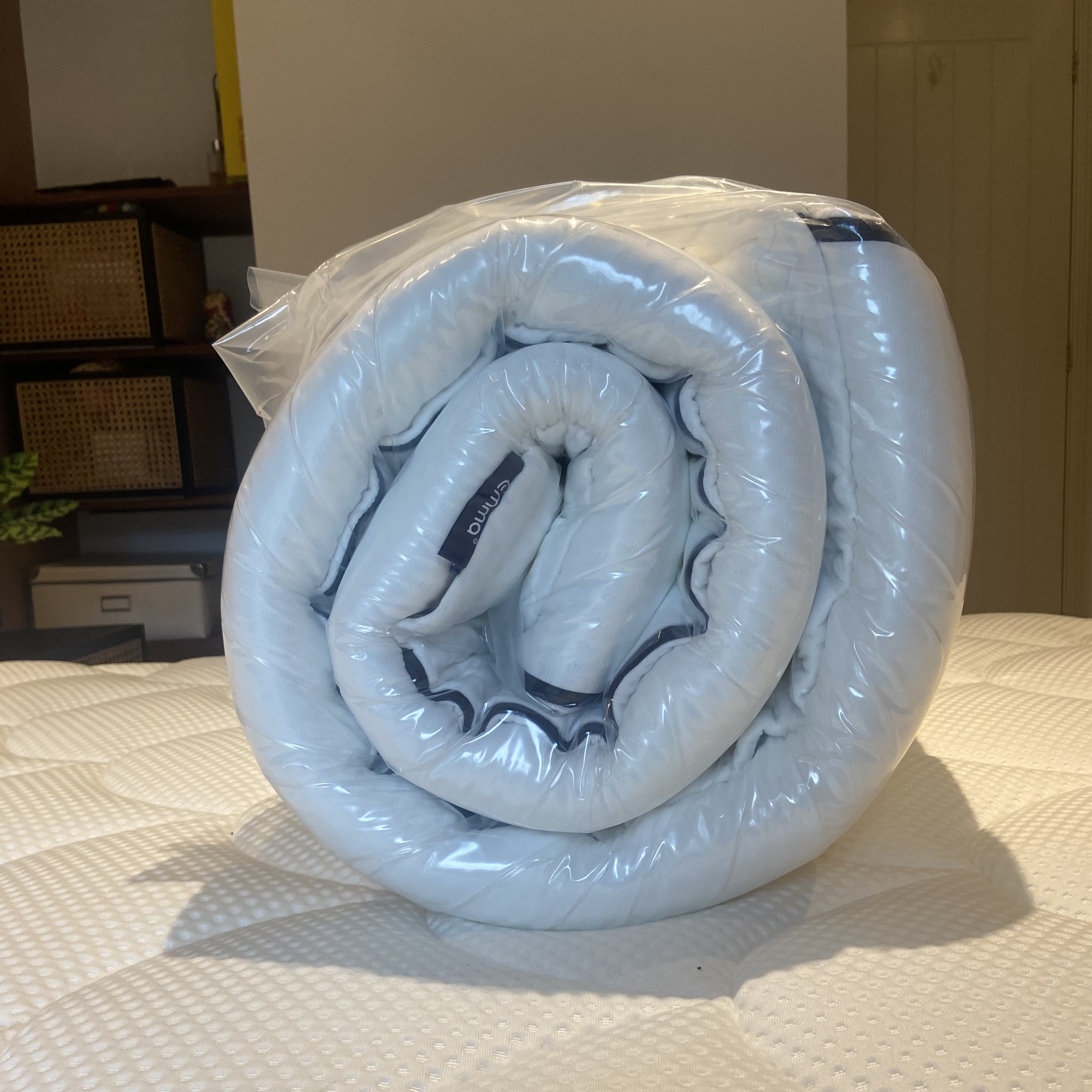
Value for money
At full price, the Emma Flip Mattress Topper costs £192 for a double. Which, considering the brand's most affordable mattress costs £359 for a double, is – I think – a lot of money.
During testing, I found the Flip to be most comparable to the IKEA NISSEHOLM mattress topper. This topper is also made from high-resilience foam and, in comparison, costs just £85 for a double.
The IKEA option is by far the better value, but the main difference between the two is that the Emma Flip can be flipped so that you can choose between the softer or firmer comfort level.
To my mind, that makes the Flip the better option for a guest bedroom or sofa bed where you might want to cater to differing comfort levels. Or it can also be a good choice for a kids' mattress. Kids' bodies are lighter, so a mattress can feel firmer, and this topper could be flipped as they grow and their needs alter.
However, if you don't need the ability to cater to different comfort levels with one topper, then I'd say the IKEA NISSEHOLM mattress topper is the better buy if you prefer a firm feel, and the £139.95 memory foam Panda Mattress Topper is the better buy if you're looking for extra cushioning.
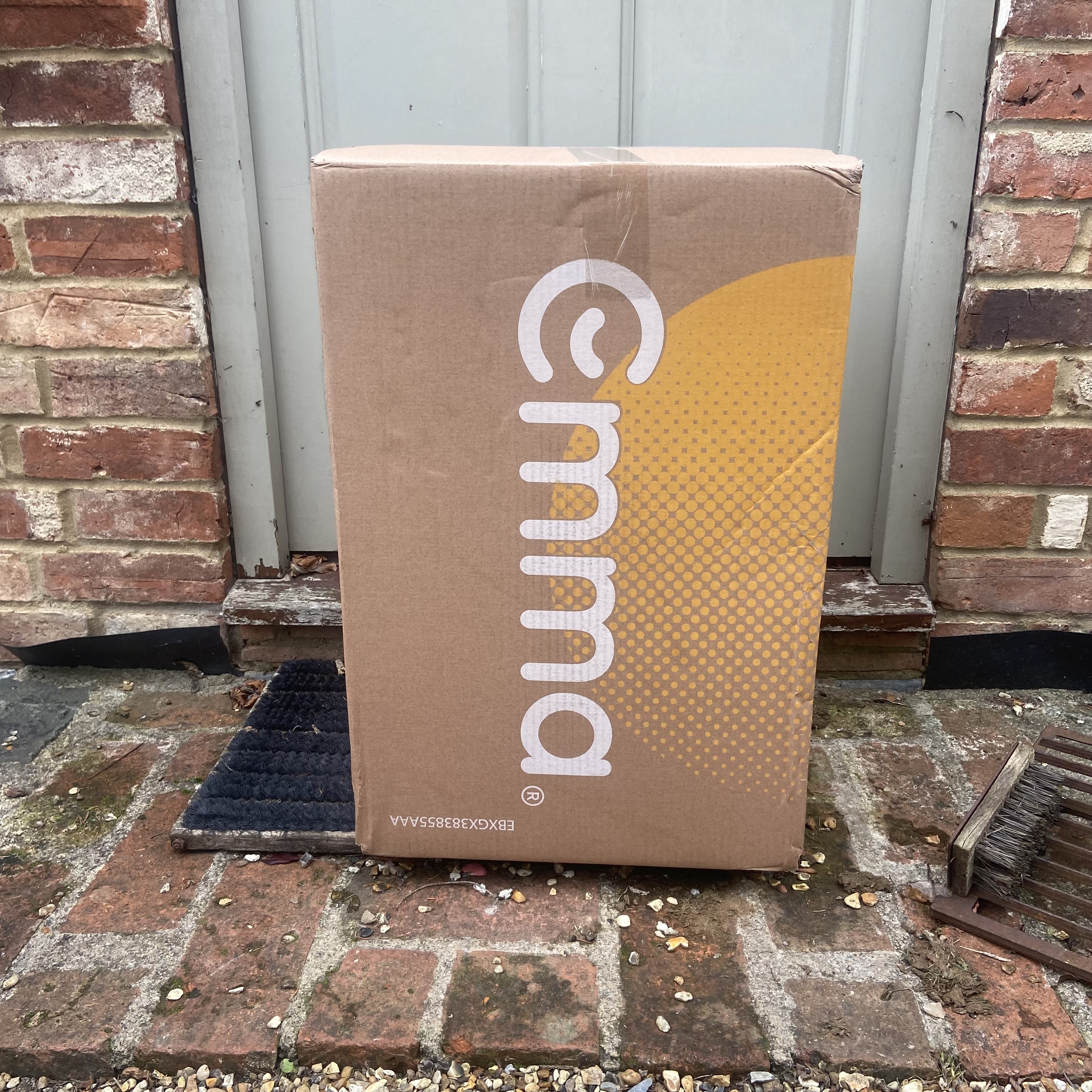
How I tested

I’m Rachel, a mother of two and a freelance reviewer who helps the Ideal Home team put all manner of products through their paces to find the top recommendations for our readers. For this review, I tested the Emma Flip Mattress Topper in a double over a hybrid memory foam mattress.
My sleep stats:
- Sleep position: back or side
- Tension preference: firm
- Sleep problems: lower back pain and/or neck pain and occasional overheating
- Height & weight: 5"5 and 9.5 stones
In order to test out this mattress topper, my husband and I slept on it for two weeks in our own home. I assessed how easy it was to attach to the bed, how comfortable it was when sleeping on my back and side, and whether it offered good temperature regulation. I also took into account how easy it was to care for and any sleep trials on offer.

After graduating with a BA Hons in English Literature from The University of Leicester, in 2002 Rachel Tompkins studied for a Postgraduate Diploma in Periodical Journalism at City University, London. She began her journalism career as a staff writer on women’s weekly magazines before leaving her Features Director role to go freelance after having her son in 2012. Now the mother-of-two lives in Oxfordshire and writes in a freelance capacity across a range of national newspapers and magazines.
You must confirm your public display name before commenting
Please logout and then login again, you will then be prompted to enter your display name.